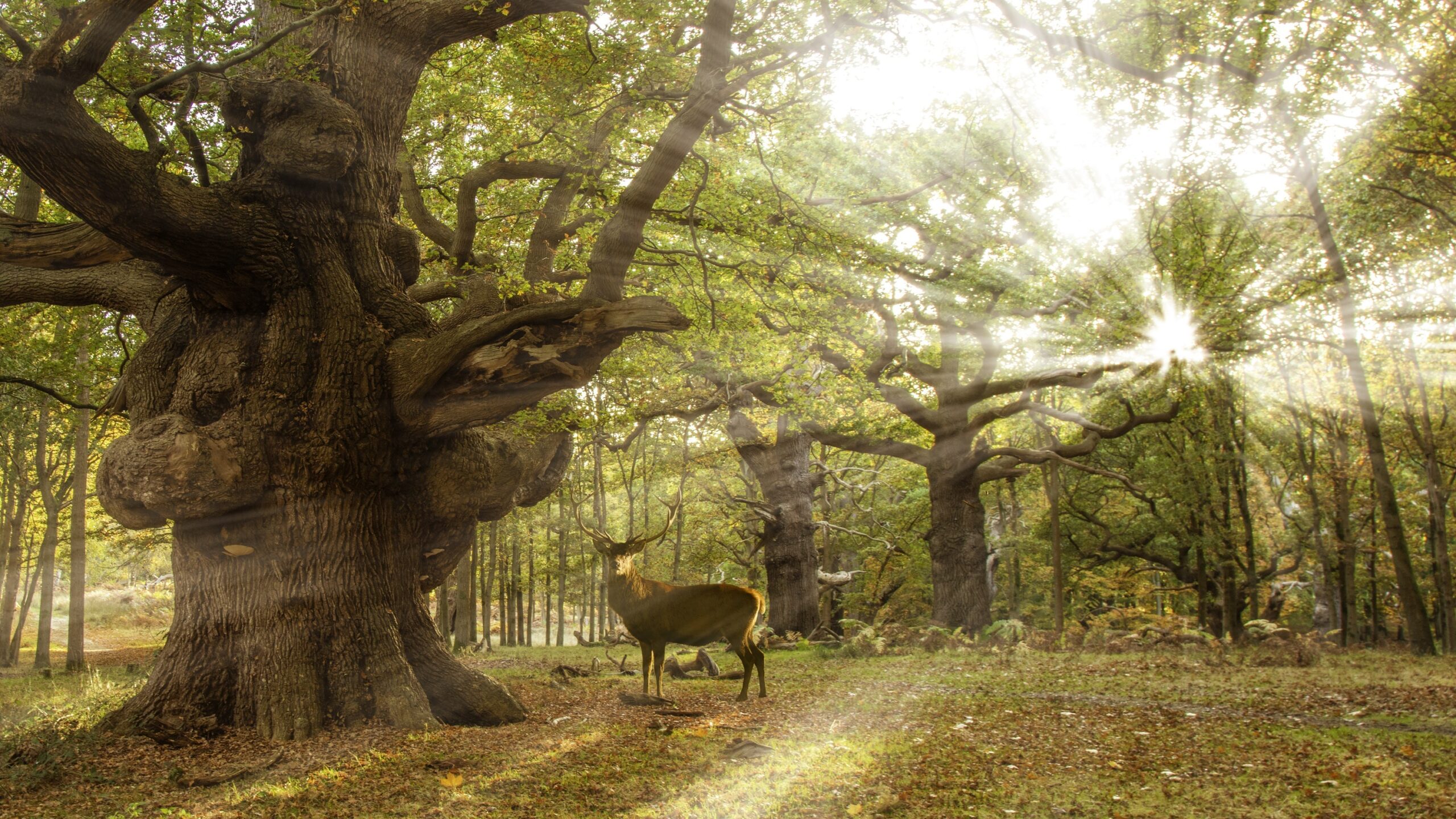
Windsor Great Park achieves Natural England’s highest rating for its ecologically important habitats

Published by
Windsor Great Park
May 21 2019
Share this article
The Windsor Estate, which includes Windsor Forest and The Great Park, has been awarded Natural England’s highest possible rating for the condition of its Sites of Special Scientific Interest* (SSSI). The ‘Favourable’ rating from Natural England now covers all SSSIs, (the designated conservation areas for ecologically important habitats), located across the Windsor Estate.
The SSSI sites to have been awarded Natural England’s highest rating include Windsor Forest and Great Park which is also of international significance as a classified Special Area of Conservation (SAC)**, Swinley Brick Pits, Swinley Park and Swinley Forest, which is also classified as a Special Protection Area***.
All of the SSSI locations across the Windsor Estate and Great Park are of exceptional nature conservation importance. They are home to one of the largest assemblages of ancient and veteran oak and beech trees anywhere in northern Europe, as well as home to significant ancient woodlands. These habitats also make it one of the best sites in Britain and Europe for rare fungi and ‘decaying wood’ invertebrates, including the very rare violet click beetle and several rare and notable species of moth.
Paul Sedgwick, Deputy Ranger of Windsor Great Park, said: “We are delighted that Windsor Forest and Great Park SSSI and SAC has received the highest possible rating from Natural England. Preserving and protecting such a large and precious landscape takes an extraordinary amount of dedication from many people and this is the culmination of a lot of hard work from past and present employees over the last 20 years. I would like to thank the entire team at Windsor Great Park who work tirelessly to ensure that our visitors can enjoy it now, and for generations to come alongside the wildlife that lives here.
“I would also like to thank partners Natural England and Ted Green, our Conservation Advisor, who have provided invaluable support and advice over many years.”
The award of Natural England’s highest rating is the result of several years of work by The Crown Estate’s team at Windsor to provide the optimal habitat for the ancient and veteran trees, rare insects and fungi. This includes diverting horse tracks to protect the roots of nearby ancient trees, planting shrubs and trees that provide nectar for insects, planting ‘successor’ trees near ancient ones to ensure the estate enjoys a long and healthy future, mowing grass to different heights to provide shelter and nectar for insects, using native breeds of cattle (Longhorns) for grazing to improve the structure and diversity of the landscape, diverting mountain bike trails away from nesting birds, restoring woodland habitats and eradicating overgrown rhododendron thickets.
It also reflects improved analysis of data which has allowed The Crown Estate and Natural England to make more detailed assessments than ever before. Natural England recognised The Crown Estate’s proactivity in enabling research and trials of different habitat management techniques on the estate, and facilitating the SSSI as a demonstration site so that conservation experts can learn and share best practice.
Andrew Smith, Natural England Manager for the Thames area, said: “I am really pleased that all the hard work put into the Estate over the years has come to fruition, and that
Windsor Forest and Great Park SSSI and SAC has earned Favourable condition status. This shows the value of commitment and great partnership working. I am also tremendously grateful for all of the input over the years by dedicated volunteers in recording the huge diversity of species found at this exceptional site.
“We look forward to continued work with The Crown Estate to maintain, enhance and secure habitats for the future benefit of Windsor’s incredible ancient and veteran trees and the wildlife that depend on them.”
About the Windsor estate
The Windsor estate covers approximately 15,800 acres and includes Windsor Great Park, the Home Park of Windsor Castle, extensive forests and ancient trees, residential and commercial properties, golf courses, a racecourse and let farms. The estate stretches 16km from Windsor Castle in the north, to Camberley in the south. Windsor Great Park – which covers approximately 5,000 acres of parkland – welcomes almost three million visitors every year, making it one of the country’s most visited tourist destinations. It includes the stunning landscapes of Virginia Waters, The Savill Garden, The Valley Gardens and The Long Walk. Windsor Great Park (excluding Windsor Castle) is the only Royal Park owned and managed by The Crown Estate.
About Natural England
Natural England is the government’s advisor on the natural environment. Established in 2006, our work is focused on enhancing England’s wildlife and landscapes and maximising the benefits they bring to the public.
For more information, visit our website: https://www.gov.uk/government/organisations/natural-england or follow us on twitter: @NE_Thames
Protected Status *About Sites of Special Scientific Interest (SSSIs)
SSSI is a national designation. The SSSI series has developed since 1949 under the National Parks and Access to the Countryside Act. The suite of sites provides statutory protection for the best examples of the UK’s flora, fauna, or geological or physiographical features including important and rare habitats such as grasslands, parkland and woodland, and ancient trees. These sites are also used to underpin other national and international nature conservation designations. SSSIs were re-notified under the Wildlife and Countryside Act 1981. Improved provisions for the protection and management of SSSIs were introduced by the Countryside and Rights of Way Act 2000 (in England and Wales)
The condition of the SSSI land in England is assessed by Natural England using categories across England, Scotland, Wales, and Northern Ireland through the Joint Nature Conservation Committee. There are six reportable condition categories: Favourable; Unfavourable Recovering; Unfavourable No Change; Unfavourable Declining; Part Destroyed; and Destroyed.
**About Special Areas of Conservation (SACs)
SACs are internationally protected sites designated under the EC Habitats Directive, set up to protect Europe’s most rare and endangered species and habitats (excluding birds).
***About Special Protection Areas (SPAs)
SPAs are sites of international significance, designated under the EU Birds Directive to protect rare, vulnerable and migratory birds.
Share this article


